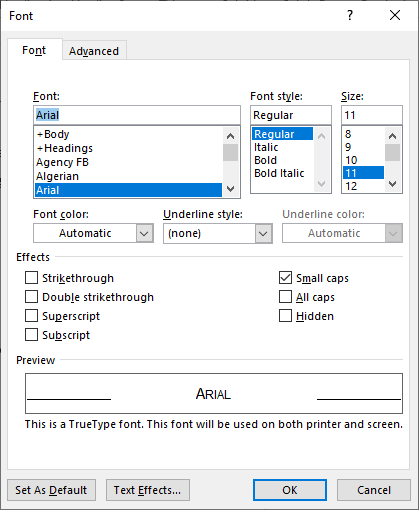Casing of Chemical Compounds 2: Rules for Capitals and Small Capitals
This article is the second in a two-article series on the casing of chemical compounds. The first article explained the rules for lowercase prefixes. This article explains the rules for capitals and small capitals. As in the first article, in the examples, note that:
- Boldface is added for emphasis.
- An ellipsis within square brackets […] indicates the remaining text.
Rules for capitals
a. Symbols of elements and molecules
The first letters of the symbols of elements and molecules are always capitalised.
Examples are Ca for calcium, Pb (plumbum) for lead and H2O (of course, for water).
Note though that such symbols are rarely used to begin sentences.
Sometimes, these symbols are used as locants and retain their capitals (and italics) even if the names appear within a sentence. For example, you need to write:
[…] N-ethylaniline […]
[…] 3H-fluorene […]
However, in the case of some stereochemical descriptors, the earlier convention (as in the case of Greek and Latin/Roman letters, discussed in Part 1) applies.
So, at the beginning of a sentence, to give an example, you need to write:
(Z)-5-Chloro-4-pentenoic acid […]
However, in the middle of a sentence, the Z retains its capitalisation but the capital ‘C’ in ‘chloro’ becomes a lowercase ‘c’. Thus, for example, you should change it to:
[…] (Z)-5-chloro-4-pentenoic acid […]
b. Abbreviations of amino acids
Similar to element and molecule symbols, the single-letter and three-letter abbreviations of amino acids retain the initial capital, irrespective of their position in a sentence.
Examples are A or Ala for alanine, R or Arg for arginine and G or Gly for glycine.
Rules for small capitals
Small capitals take the same form as the corresponding capitals but are shorter and with thicker strokes. Small capitals are often used to denote isomers, as in L-methionine and D-serine.
Here is what you need to know about writing them.
- They remain the same across all usage. They are not changed into full capitals even if the term begins a sentence.
- However, the next letter follows the normal rule. For example, the M and S are capitalised in L-Methionine and D-Serine when these chemical names occur at the beginning of a sentence.
Writing small capitals in MS Word
- On the Home tab, go to the Font menu.
- On the Font menu, click the downward diagonal arrow in the bottom right corner.

- In the Font box that is displayed, in the Effects section, select (check) the Small caps box. (‘Small caps’, of course, stands for ‘small capitals’.)

End note
As mentioned in Part 1, we also recommend looking up specific names in appropriate guides while writing. A good and comprehensive source is the International Union of Pure and Applied Chemistry (IUPAC).
Read previous (first) in series: Casing of Chemical Compounds 1: Rules for Lowercase Prefixes
Maximise your publication success with Charlesworth Author Services.
Charlesworth Author Services, a trusted brand supporting the world’s leading academic publishers, institutions and authors since 1928.
To know more about our services, visit: Our Services